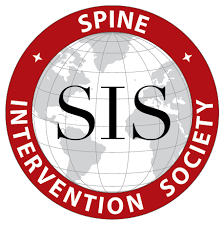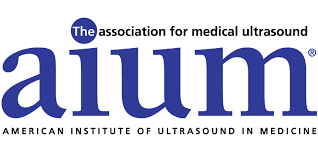The Guide to Laser Nail Fungus Removal
December 29, 2024
Laser nail fungus removal, also known as laser toenail fungus treatment, is a safe and effective procedure that uses targeted laser energy to eliminate the fungal infection in the toenails. This innovative technology has become an increasingly popular choice for individuals seeking a solution to their persistent nail fungus problem.
The process involves the application of a specialized laser that is designed to penetrate the nail and reach the underlying fungal infection. The laser’s intense heat disrupts the fungal cells, causing them to die off and allowing the nail to grow back healthy and clear.
Compared to traditional treatments like oral antifungal medications or topical ointments, laser nail fungus removal offers a more efficient and long-lasting solution. It is a relatively quick and painless procedure that can be performed in a clinical setting by a qualified healthcare professional.
How Does Laser Nail Fungus Removal Work?
The process of laser nail fungus removal typically involves the following steps:
- Evaluation: The healthcare provider will examine the affected nail and assess the extent of the fungal infection. They may also take a sample of the nail for laboratory analysis to confirm the presence of a fungal infection.
- Preparation: The provider will prepare the treatment area by cleaning and debriding the nail, if necessary, to ensure the laser can effectively reach the fungal infection.
- Laser Treatment: The provider will use a specialized laser device to target the fungal infection. The laser’s intense heat penetrates the nail and disrupts the fungal cells, causing them to die off.
- Repeat Treatments: Depending on the severity of the infection, multiple laser treatments may be required to fully eradicate the fungus. The provider will work with the patient to determine the appropriate number of sessions needed.
- Nail Regrowth: As the fungus is eliminated, the nail will begin to grow back healthy and clear. This process can take several months, as the new, healthy nail gradually replaces the infected portion.
The laser used in this procedure is designed to selectively target the fungal cells without causing significant damage to the surrounding healthy nail and skin tissue. This precision helps to minimize the risk of side effects and ensures a comfortable treatment experience for the patient.
Benefits of Laser Nail Fungus Removal
Laser nail fungus removal offers several advantages over traditional treatment methods:
- Effective: Numerous studies have shown that laser treatment is highly effective in eliminating fungal infections, with success rates often exceeding 80%.
- Faster Results: Laser treatment can produce visible results more quickly than oral or topical antifungal medications, which can take several months to show improvement.
- Minimal Discomfort: The laser procedure is generally well-tolerated, with most patients reporting little to no pain or discomfort during the treatment.
- Reduced Side Effects: Laser treatment avoids the potential side effects associated with oral antifungal medications, such as liver damage or drug interactions.
- Improved Appearance: As the fungus is eliminated, the nail can grow back clear and healthy, improving the overall appearance of the affected toe.
- Convenient: Laser nail fungus removal is a relatively quick procedure that can be performed in a single office visit, making it a convenient option for busy individuals.
Common Misconceptions about Laser Nail Fungus Removal
Despite the growing popularity of laser nail fungus removal, there are still some common misconceptions about this treatment:
- Myth: Laser Treatment is Painful: While some patients may experience mild discomfort during the procedure, most report little to no pain. The laser is designed to target the fungal infection without causing significant damage to the surrounding healthy tissue.
- Myth: Laser Treatment is Expensive: While the initial cost of laser treatment may be higher than some other treatment options, the long-term benefits and reduced risk of recurrence can make it a cost-effective choice in the long run.
- Myth: Laser Treatment is Ineffective: Numerous studies have demonstrated the high success rates of laser nail fungus removal, with many patients experiencing clear, healthy nails after a series of treatments.
- Myth: Laser Treatment is Unsafe: When performed by a qualified healthcare provider, laser nail fungus removal is a safe and well-established procedure with a low risk of side effects.
Is Laser Nail Fungus Removal Painful?
One of the primary concerns many patients have about laser nail fungus removal is the potential for pain or discomfort during the procedure. However, the reality is that this treatment is generally well-tolerated, with most patients reporting little to no pain.
The laser used in this procedure is designed to target the fungal infection while minimizing damage to the surrounding healthy nail and skin tissue. The intense heat generated by the laser disrupts the fungal cells, causing them to die off, but the treatment is carefully calibrated to avoid significant pain or discomfort.
Some patients may experience a mild, temporary sensation of warmth or tingling during the laser application, but this is typically short-lived and easily managed. The provider may also use a local anesthetic to numb the treatment area, further reducing any discomfort.
It’s important to note that the level of pain experienced can vary from person to person, and individuals with a higher pain tolerance may be less affected by the procedure. However, the overall consensus from patients who have undergone laser nail fungus removal is that the treatment is relatively painless, especially when compared to other treatment options like oral antifungal medications or surgical nail removal.
How Long Does Laser Nail Fungus Removal Take?
The duration of a laser nail fungus removal procedure can vary depending on several factors, including the number of affected nails, the severity of the fungal infection, and the specific treatment protocol used by the healthcare provider.
In general, a single laser treatment session can take anywhere from 15 to 30 minutes, depending on the number of nails being treated. The provider will typically focus the laser on each affected nail, applying the targeted energy for a specific duration to effectively disrupt the fungal cells.
For patients with more extensive fungal infections, multiple treatment sessions may be required to fully eradicate the fungus. The provider will work with the patient to develop a treatment plan that outlines the recommended number of sessions, taking into account the individual’s needs and the progress of the treatment.
It’s important to note that the laser nail fungus removal procedure is typically performed in a single office visit, making it a convenient option for busy individuals. The provider will schedule follow-up appointments as needed to monitor the patient’s progress and ensure the fungus has been fully eliminated.
While the initial treatment may take some time, the overall duration of the laser nail fungus removal process is generally shorter than other treatment options, such as oral antifungal medications or topical ointments, which can require several months of consistent use to achieve similar results.
Side Effects and Risks of Laser Nail Fungus Removal
Laser nail fungus removal is generally considered a safe and well-tolerated procedure, with a low risk of side effects and complications. However, as with any medical treatment, there are some potential risks and side effects that patients should be aware of:
- Temporary Discomfort: As mentioned earlier, some patients may experience mild, temporary discomfort or a sensation of warmth during the laser treatment. This is usually short-lived and easily managed with over-the-counter pain medication, if necessary.
- Nail Discoloration: In some cases, the treated nail may temporarily appear discolored or cloudy as the fungus is being eliminated. This is a normal part of the healing process and the nail will gradually grow back clear and healthy.
- Skin Irritation: There is a small risk of mild skin irritation or redness in the treated area, which may occur due to the heat generated by the laser. This is typically temporary and can be managed with over-the-counter topical creams or ointments.
- Infection: As with any medical procedure, there is a slight risk of infection at the treatment site. However, this risk is minimized by the provider’s use of sterile techniques and the patient’s adherence to proper aftercare instructions.
- Nail Damage: In rare cases, the laser treatment may cause minor damage to the nail or the surrounding skin. This is typically temporary and the nail will gradually grow back healthy.
It’s important to note that the risks associated with laser nail fungus removal are generally low, and the potential benefits of the treatment often outweigh the minimal risks. Patients should discuss any concerns or questions they have with their healthcare provider prior to the procedure to ensure they have a clear understanding of the potential side effects and risks.
Aftercare Tips for Laser Nail Fungus Removal
After undergoing laser nail fungus removal, it’s essential for patients to follow the aftercare instructions provided by their healthcare provider to ensure the best possible outcome and minimize the risk of complications.
Here are some key aftercare tips for laser nail fungus removal:
- Keep the Treated Area Clean: Gently wash the treated area with mild soap and water, and pat it dry. Avoid submerging the foot in water, such as in a bathtub or swimming pool, for the first few days after the procedure.
- Avoid Irritation: Refrain from wearing tight-fitting shoes or socks, and try to keep the treated area protected from any potential sources of irritation.
- Apply Topical Medications: The provider may recommend applying a topical antifungal cream or ointment to the treated area to help prevent any recurrence of the fungal infection.
- Attend Follow-up Appointments: It’s important to attend all scheduled follow-up appointments with the healthcare provider to monitor the progress of the treatment and ensure the fungus has been fully eliminated.
- Maintain Good Foot Hygiene: Continue to practice good foot hygiene, such as keeping the feet clean and dry, wearing breathable socks, and trimming the nails regularly, to help prevent future fungal infections.
- Be Patient: The process of nail regrowth can take several months, so it’s important for patients to be patient and allow the new, healthy nail to gradually replace the infected portion.
By following these aftercare tips and maintaining open communication with their healthcare provider, patients can help ensure a successful outcome and minimize the risk of any complications or recurrence of the fungal infection.
Conclusion
Laser nail fungus removal has emerged as a highly effective and convenient treatment option for individuals struggling with persistent nail fungal infections. This innovative procedure uses targeted laser energy to disrupt and eliminate the fungal cells, allowing the nail to grow back clear and healthy.
With its high success rates, minimal discomfort, and reduced risk of side effects, laser nail fungus removal offers a compelling alternative to traditional treatment methods, such as oral antifungal medications or topical ointments. By addressing the root cause of the problem and providing long-lasting results, this treatment can help patients regain confidence in the appearance of their nails and improve their overall quality of life.
If you or someone you know is dealing with a persistent nail fungal infection, consider exploring the benefits of laser nail fungus removal with a qualified healthcare provider. With the right treatment plan and proper aftercare, you can achieve clear, healthy nails and enjoy the confidence that comes with a beautiful, fungus-free smile.
If you’re struggling with a persistent nail fungal infection, don’t hesitate to schedule a consultation with a qualified healthcare provider to learn more about the benefits of laser nail fungus removal. This innovative treatment can help you achieve clear, healthy nails and regain your confidence. Take the first step towards a fungus-free future by contacting a provider in your area today.












